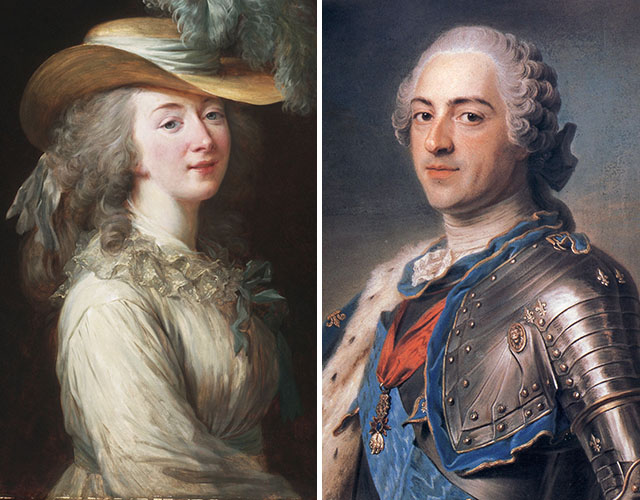Royal Mistresses: The Stories Behind History's Most Infamous Favorites

Next to history’s many kings, whose stories are chronicled in royal-related books and records, are the infamous mistresses who played a vital part in each monarch’s reign.
Also referred to as favorites, these mistresses were said to have possessed beauty, charm, and wit.

One of the most famous royal mistresses, Madame du Barry; Louis XV
As royals belonged to a tight-knit circle, the women they met and took as mistresses were usually well-born and titled. If they weren’t born with a title, the king simply gave them one—along with a monthly allowance and endless benefits. Of course, this depended on each king. To keep up appearances, several mistresses racked up debts through clothes, carriages, and servants.
But why exactly did royals take on mistresses? In the olden days, royal couples entered marriage solely to preserve political and dynastic goals. As such, kings (and queens) took on mistresses (and lovers) for a chance at romance and love. Royal mistresses were generally accepted, if not, tolerated, with royal consorts, courtiers, and staff often looking the other way. These mistresses acted as a source of entertainment for the monarchs in power, and many had active roles as strategists and advisers who had the ability to influence history.
The title of a royal mistress was somewhat official. Mistresses held a position at court and accompanied the king to meetings. And even when their relationships with the kings ceased to be sexual, some mistresses were known to remain influential in the royal court. Diane de Poitiers, King Henry II of France’s favorite, influenced the French court so much that she had the ability to make laws, appoint ministers, and impose taxes.

Diane de Poitiers; King Henry II of France
In some cases, kings went on to have children with their mistresses. Bearing a child and being unwed was an even bigger scandal than being a mistress, so to counter this, kings sometimes set up their mistresses with other noblemen. And while being a royal bastard has often been portrayed as a curse, a number of illegitimate royal offspring have had their role in history. In the early days, in fact, they weren’t treated any differently. Prior to 786 in England and the U.K., any royal offspring–legitimate or not–could ascend the throne, at least until Papal delegates visited the Offa of Mercia’s court and decreed that those “born to adultery or incest” and illegitimate relations weren't allowed to take the throne.
The descendants of royal mistresses are still around today. Former British Prime Minister David Cameron and his wife Samantha can trace their ancestry to King William IV and Charles II of England respectively. In fact, two of the 20th century’s most famous royals descended from a number of favorites. Both of Prince Charles' wives, Princess Diana and Camilla Parker Bowles, descended from Charles II’s favorite Louise de Kérouaille and William of Orange’s lover Arnold van Keppel (though Keppel's relationship with William III has been disputed).

The Spencer family is believed to have descended from Charles II’s favorite Louise de Kérouaille.
Illegitimate royals have become a source of fascination in recent years. In 2010, PBS aired a program titled Lost Royals that uncovered history’s most famous mistresses and tracked down the modern day illegitimate descendants of English royalty. There is even a lineage society called the “Descendants of the Illegitimate Sons and Daughters of the Kings of Britain,” which is open for membership to those “who prove descent from an illegitimate son or daughter of a king, an illegitimate son or daughter of the child of a king, or an illegitimate son or daughter of the grandchild of a king of England, Scotland, Wales, Great Britain or the United Kingdom.”
The life of a royal mistress wasn’t always easy. Charles II, who had several mistresses at one time, was known to enjoy watching them scheme and stab each other in the back. Another that comes to mind is Madame du Barry, Louis XV of France’s official mistress, who became entangled with anti-revolutionaries during the French Revolution’s Reign of Terror and was subsequently beheaded by guillotine.
Life at the court was very unstable for a mistress. If she fell out of favor with the king, her title, property, and jewelry could be taken back. The possibility of the king finding interest in another was also a constant worry. Aside from the king, mistresses dealt with members of the court who weren't all too pleased with a woman in influence.
Rarely did a royal mistress’ life

Lola Montez; King Ludwig I of Bavaria
Things took a turn for the worst for mistresses when kings died. When the monarch was on his deathbed, some mistresses would be turned away. Kings were also known to lease the crown’s properties to their mistresses, and in the event of their death, they’d be without homes.
It was during Queen Victoria's reign when royal mistresses and bastards' influence waned. The monarch banned the illegitimate royals from the court and famously called them "ghosts best forgotten."


